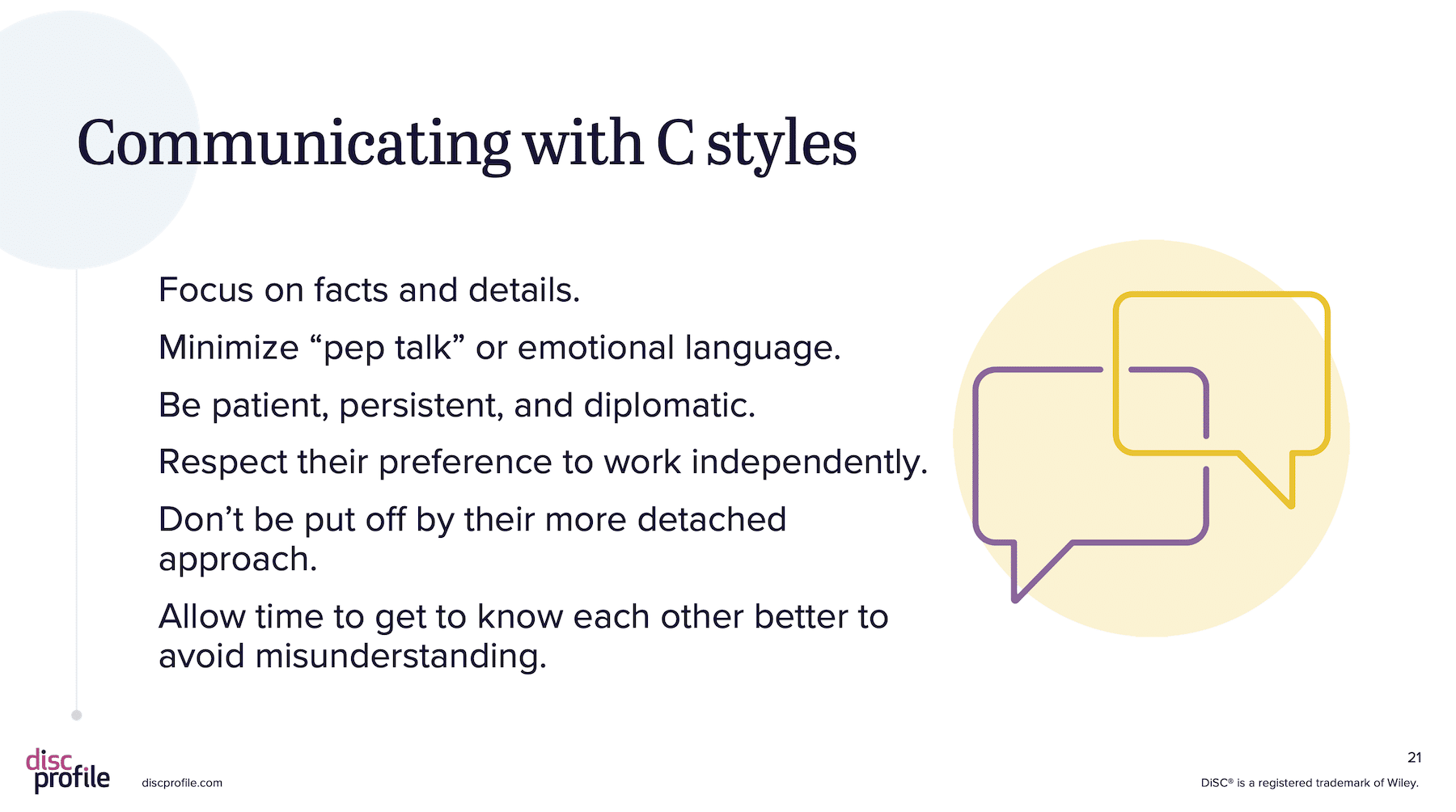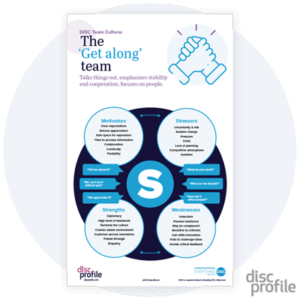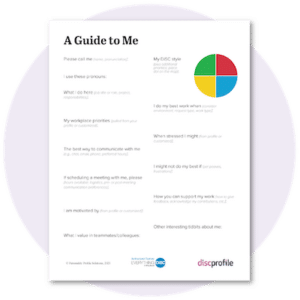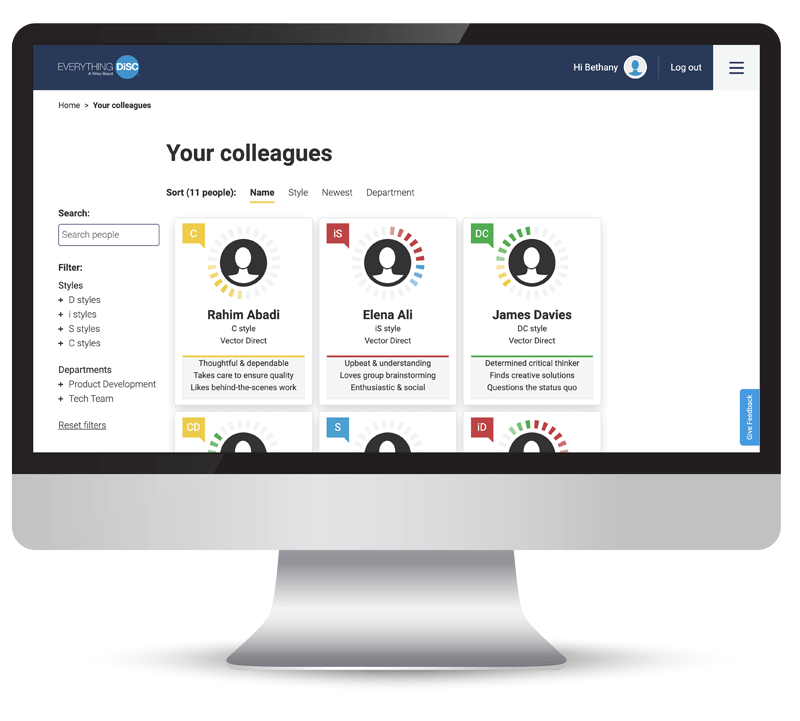Adding a new employee to your team is about more than just getting forms signed and logins set up. Taking care with an employee’s introduction to your organization is absolutely vital to retention, performance, morale, and team cohesion.
Only 12 percent of employees think they had a good onboarding experience. That’s one reason why almost 30 percent of people will quit a new job within 90 days.
Research by the Brandon Hall Group found that organizations with strong onboarding improve employee retention by 82 percent and productivity by 70 percent (PDF).
New employees want clarity around company policies as well as the expectations and responsibilities of their new role. They want on-the-job training to set them up for success. And they want a friendly welcome into this new community that will be such a big part of their lives moving forward.
Here are some keys to great onboarding using Everything DiSC®:
Make use of the “preboarding” period
Only 23 percent of companies take advantage of the preboarding period. This is a real missed opportunity to create a sense of belonging.
An employee’s onboarding journey should start the moment they accept the position, rather than on their first official day of work. This means having your process ready to go. Think about both the “peoplework” and the paperwork: Is there a personal welcome you can send the new hire, such as a handwritten card from their manager or a video of their new teammates showing their excitement? Which forms and processes can be taken care of in advance so the employee’s first day can be more engaging?
An expert in this article from SHRM recommends creating a new employee portal with this type of content. It can also offer information on what the first day will be like, a glossary of company acronyms, the employee handbook, and other useful details about the employee’s new department or job responsibilities.
You can also have the new hire take an Everything DiSC assessment before they start. If you’re using Catalyst™ or MyEverythingDiSC™, the employee will be able to learn more about their style as well as the styles of their new coworkers at their own pace.
Personalize the training

Onboarding should not look the same for every new employee. While it’s important to have a robust onboarding plan that has proven to work well at your company, there should be some flexibility to adapt the sessions to the new hire’s style.
If your new employee has completed an Everything DiSC assessment, review the needs and motivators of their style and use this information to tailor the training to them. Even without an assessment, you can use your people-reading skills to adjust the training to what will be most engaging for the new hire.
For example, i- and D-style folks probably don’t want to sit alone at their desk and read through the employee manual. However, those with S and C styles might appreciate at least a short break from more people-heavy activities to review this information on their own. Don’t bog down a D-style hire with all the details right away; start with the need-to-know. Leave time to encourage questions from S-style employees who might not feel comfortable interrupting to get clarification on something they don’t understand. Make sure those with C styles know the agenda for the day and that the goals are clear.
Debriefing the new employee on their assessment results should also be part of the onboarding process.
Talk about team culture
 If your new hire has not explored Catalyst yet, show them how they can compare styles with the people they’ll be working with, both within and outside their immediate team. Also, encourage existing team members to learn about the new employee.
If your new hire has not explored Catalyst yet, show them how they can compare styles with the people they’ll be working with, both within and outside their immediate team. Also, encourage existing team members to learn about the new employee.
Look at the style distribution on the team, and discuss the team’s culture. It’s a great idea to involve the whole team in this discussion and have team members articulate their culture in their own words. (You might be surprised by what they say and learn something new!)
Bringing on a new employee is a good opportunity for everyone on the team to reset, recommit to their goals, and reprioritize healthy communication. Once the new employee is settled a bit, an Everything DiSC or Five Behaviors® training can assist with this.
Create “a guide to me”
 When Ted Hockey began his job as CEO of TD Ameritrade, he wrote a “user’s guide” to himself and sent it to all employees. Hockey’s guide was close to 5,000 words, but what if we scaled that down a bit, to something meant to be pinned outside each employee’s office or cubicle?
When Ted Hockey began his job as CEO of TD Ameritrade, he wrote a “user’s guide” to himself and sent it to all employees. Hockey’s guide was close to 5,000 words, but what if we scaled that down a bit, to something meant to be pinned outside each employee’s office or cubicle?
If everyone has a “guide to me” posted with information such as motivations, stressors, and preferred methods of communication, employees get real-time reminders of their colleagues’ work styles.
Here is a Guide to Me you can use in tandem with Everything DiSC assessments:
- A Guide to Me (fillable PDF)
- A Guide to Me (DOCX)
For something even simpler, try these Workplace Style Guides.
If your team is remote, think about how employees can share this information in digital gathering spaces. Ask people to add some of these items to their profile on your collaboration platform or project management space.
Establish a strong relationship with the manager right away
New hires would rather go through onboarding with their manager than with HR. Even if the manager isn’t involved in every step, they should be spending plenty of time with the new hire during onboarding. We mentioned above that 30 percent of people have quit a job in the first 90 days. Feeling that “their boss was a jerk” was in the top three reasons for leaving.

One-on-ones with the manager are a great opportunity to clarify expectations and put the focus on communication and trust. These discussions can sometimes be unhelpfully general. One way to make them more concrete is by using Everything DiSC profiles as a starting point for the discussions. Be sure to use both the employee’s and manager’s profiles, rather than only the employee’s.
The manager can ask the employee which aspects of their profile they feel are most accurate and share their own top priorities. Run a comparison report (or, if you’re using Catalyst, simply navigate to Your colleagues) and talk through the items one by one.
For example, a manager might say: “I am very accepting, and the report shows you as very skeptical. Would you agree with that? To me, this means I may need to focus more on facts and evidence when asking you to start a new project,” and so on.
Remember, onboarding isn’t done after week one
The first week at any job is usually a blur. You’ll need to review important parts of your training throughout the coming months. Continue to check in. Mine for problems. Overcommunicate.
Regular Everything DiSC training sessions are a great way to open up discussions and build team cohesion. Here are some ideas for keeping DiSC in learners’ minds.
The time after official onboarding is sometimes called “post-boarding,” and it is crucial for making sure the employee feels they have what they need. It’s also a good time to ask for feedback on the onboarding process, so you can continue to refine and improve it.
Know that a person’s style is just one aspect of a person
Using DiSC® is a great way to spark discussions when getting to know someone, but be careful not to assume too much based on someone’s style. Personality assessments are not a shortcut allowing you to bypass the everyday work of relationship-building. Ask your new employee lots of questions, and get to know them as an individual.
There’s variation within styles, and part of the joy of building a relationship with someone new is learning what makes them unlike anyone else.

